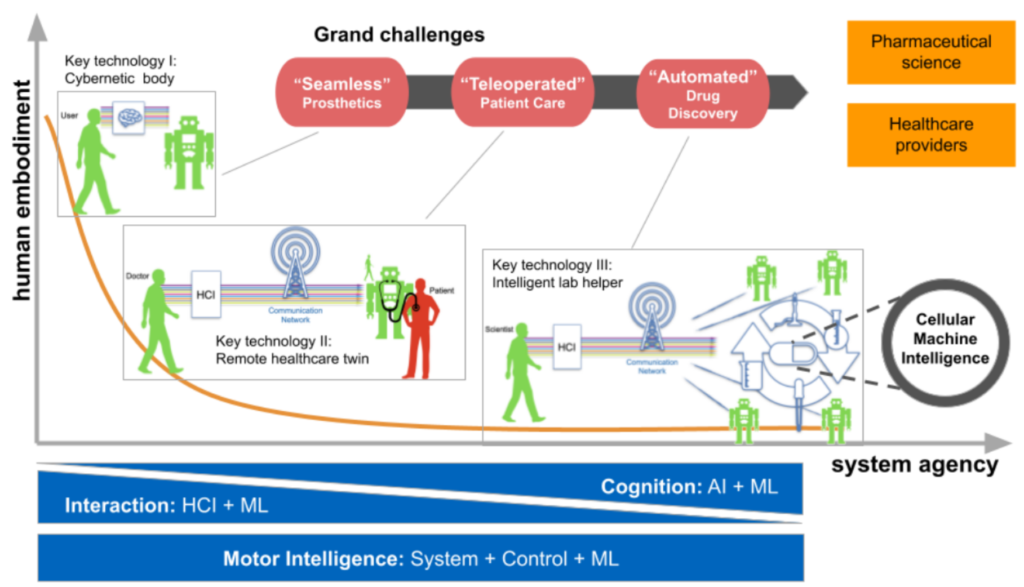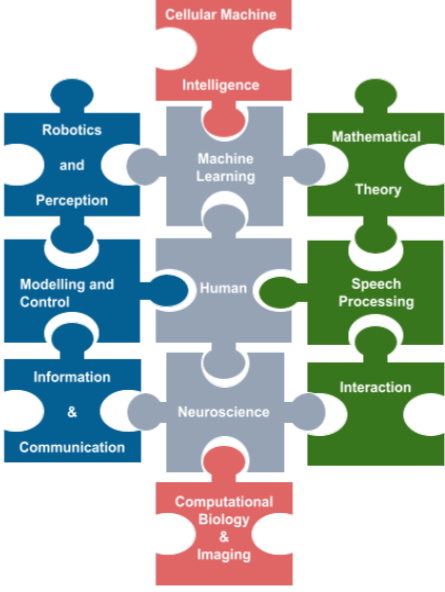Human Embodiment and System Agency in Trustworthy AI for the Future of Health
AI is at the core of Bavaria’s Hightech Agenda. The AI-Network Bavaria consists of its center Munich with its focus area intelligent robotics and the nodes distributed over the entire Free State. ONE MUNICH Strategy Forum aims to further implement, synergize and advance this strategy within Bavaria’s AI Network. Through this Strategy Forum the three leading Munich research institutes Technical University of Munich (TUM), Ludwig Maximilian University of Munich (LMU) and Helmholtz Zentrum München (HMGU) unite their unique and highly complementary expertise and efforts in the fundamental, theoretical, and applied machine intelligence, system sciences, and translational medicine to address societal health challenges of today and the future. This particular constellation and mission form the nucleus for a national if not European-wide unique AI focus in Munich.

Scientific Goals
In this interdisciplinary project, we will work on the scientific foundations in (1) the analysis of current limitations of embodied AI, (2) the development of scalable, explainable, safe, and robust robot learning and decision making, and (3) natural multimodal human-robot interaction. Notably, we will (4) synergize and integrate our work in state-of-the-art robotic systems. Their abilities to interact, learn, and manipulate will be validated in real-world scenarios driven by grand societal health challenges, spanning the different dimensions of system agency and human embodiment of the AI system within the relation of human and machine. The human embodiment axis describes the level of physical interaction and the proximity between the human and the robot. Accordingly, a tightly integrated prosthetic device
represents a higher level of embodiment compared to a teleoperated humanoid, even at high transparency. The system agency axis shows the influence of automation and AI activity. Thus, while the role of the AI increases in cognition, the frequency and bandwidth of human-computer interaction (HCI) decreases as the system agency advances. Independent of this progression, machine learning (ML) is always actively employed in interaction, control, cognition, and decision-making.
We identify three representative key technologies that span across these two axes of characterization. In the cybernetic body (I), we envision a high level of human embodiment where wearable sensors transmit human brain signals to control a robotic system and its sensory feedback is fed back to the user. This robotic system may be another human-embodied prosthetic device driven with wearable actuators or a remotely controlled robot system. In the robotic healthcare twin (II), the physical distance between the human and the robotic system increases along with the activity of the AI in cognition and feedback. In this scenario, a communication network allows the bilateral teleoperation of a robotic healthcare avatar by the human who uses human-computer interaction interfaces (e.g., haptic devices). The intelligent lab helper (III) denotes robotic systems that are more self-sufficient in achieving their tasks owing to the increased level of system agency. Here, the human communicates with the assistants for high-level task goals and human expert input, which are then autonomously planned and executed by the various intelligent lab helpers.

In turn, these will be the enabling technological platforms for establishing the future intelligent life science labs, which
- flexibly automate traditional life science workflows, letting the field experience a similar technology push to industrial manufacturing with the Industry 4.0 transformation and the recent advancement towards AI-enabled manufacturing.
- have the have the power to enable the emerging research field of cellular machine intelligence; i.e., unveiling and controlling the embodied intelligence that can be found at the cellular level based on methods from machine learning and systems theory and life sciences. Foremost, the grand challenge of automated drug discovery for personalized medicine will be a key mission that can then finally be addressed with the development of intelligent and trustworthy lab helpers and increasingly sophisticated cellular machine intelligence methods.